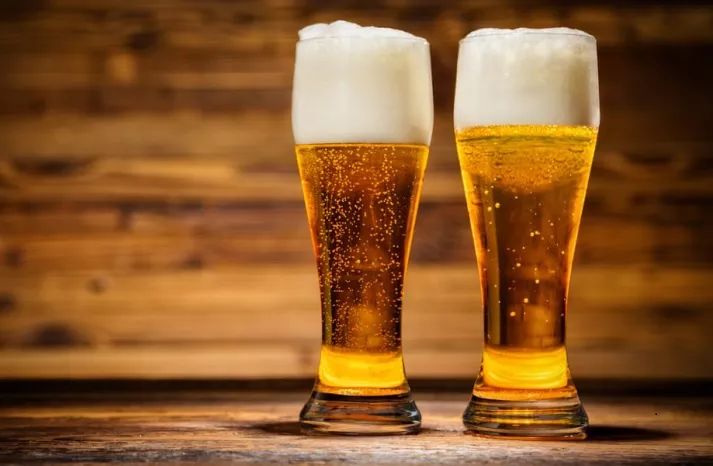Beer, the beloved beverage enjoyed by millions globally, is a complex concoction comprising a myriad of chemical compounds. Understanding the chemistry behind beer production and the diverse range of chemicals it contains is crucial for brewers, enthusiasts, and researchers alike. Exploring the depths of “what chemicals are in beer” unravels a fascinating world of organic and inorganic compounds contributing to its flavor, aroma, appearance, and even its shelf life.
Water: The Foundation of Beer Chemistry
At its core, beer is primarily water, comprising up to 90-95% of its content. Water quality greatly influences beer’s taste and overall quality. Minerals present in water, such as calcium, magnesium, and potassium, impact the pH balance and affect enzymatic reactions during brewing. Understanding the mineral composition of water sources is pivotal for brewers to achieve consistency in their final product and influence characteristics like mouthfeel and clarity.
Malt: The Source of Fermentable Sugars
Malt, a key ingredient in beer production, contributes significantly to its chemical makeup. Barley is the most common grain used in malt production, undergoing a malting process where enzymes break down complex carbohydrates into fermentable sugars like glucose and maltose. These sugars serve as food for yeast during fermentation, ultimately influencing the beer’s alcohol content and sweetness.
Hops: Adding Bitterness, Flavor, and Aroma
Hops, the cone-shaped flowers of the Humulus lupulus plant, are renowned for their role in providing bitterness, flavor, and aroma to beer. They contain various essential oils and alpha acids, such as humulene and myrcene, responsible for the beer’s bitterness and aromatic complexity. Additionally, hops act as natural preservatives, extending the beer’s shelf life by inhibiting bacterial growth.
Yeast: The Microscopic Workhorse
Yeast, a microscopic fungus, plays a pivotal role in beer production by fermenting the sugars extracted from malt. Saccharomyces cerevisiae and Saccharomyces pastorianus are the most common yeast strains used in ale and lager production, respectively. During fermentation, yeast metabolizes sugars, producing alcohol and carbon dioxide while contributing to beer’s flavor profile through the production of various esters and phenols.
See Also: why is beer so bitter
Alcohol: Ethanol and Beyond
The most recognized chemical compound in beer, ethanol, is the primary alcohol formed during fermentation. Ethanol content varies among beer styles and significantly influences its taste, body, and intoxicating effects. Beyond ethanol, other alcohols, such as propanol and butanol, contribute to the overall flavor profile of beer, albeit in smaller quantities.
Carbon Dioxide: Effervescence and Mouthfeel
Carbon dioxide, a byproduct of yeast fermentation, is responsible for beer’s carbonation and effervescence. This gas not only adds bubbles but also influences the beer’s mouthfeel, contributing to its perceived body and texture. The level of carbonation varies across beer styles, with some beers being highly carbonated, like sparkling ales, while others, such as stouts, possess a smoother, lower carbonation profile.
Acids: Balancing Flavors and Preserving Quality
Various acids play crucial roles in shaping beer’s flavor profile and contributing to its preservation. Organic acids, like lactic and acetic acids, impart tartness and sourness in certain beer styles, such as Berliner Weisse and Lambic. Moreover, acids act as natural preservatives, inhibiting the growth of undesirable microorganisms and contributing to beer’s shelf stability.
Phenols and Esters: Aromatic Complexity
Phenols and esters, aromatic compounds formed during fermentation, significantly impact beer’s aroma and flavor. Phenols contribute spicy, clove-like, or medicinal notes, while esters produce fruity or floral aromas. The presence and concentration of these compounds vary based on yeast strain, fermentation temperature, and other brewing factors, adding depth and complexity to beer profiles.
Sulfur Compounds: Aromatic Nuances and Off-Flavors
Sulfur-containing compounds, though present in trace amounts, play a crucial role in beer aroma. Compounds like hydrogen sulfide and dimethyl sulfide contribute to characteristic aromas, ranging from subtle fruity nuances to undesirable off-flavors resembling rotten eggs or cooked vegetables. Brewers carefully manage these compounds during fermentation and conditioning to ensure an appealing final product.
Polyphenols: Influencing Color and Stability
Polyphenols, found in ingredients like hops and malt, contribute to beer’s color, flavor, and mouthfeel. These compounds interact with proteins and carbohydrates, influencing the beer’s haze, astringency, and long-term stability. Managing polyphenol levels is crucial for achieving desired clarity and preventing undesirable haze formation in certain beer styles.
Conclusion
Delving into the world of beer chemistry reveals a complex interplay of numerous chemical compounds that contribute to its diverse flavors, aromas, appearance, and overall quality. From water as its foundation to the intricate interactions of malt, hops, yeast, and various other compounds, understanding “what chemicals are in beer” underscores the scientific artistry behind brewing. This exploration not only fascinates enthusiasts but also guides brewers in crafting exceptional beers while pushing the boundaries of innovation in the ever-evolving world of brewing science.


